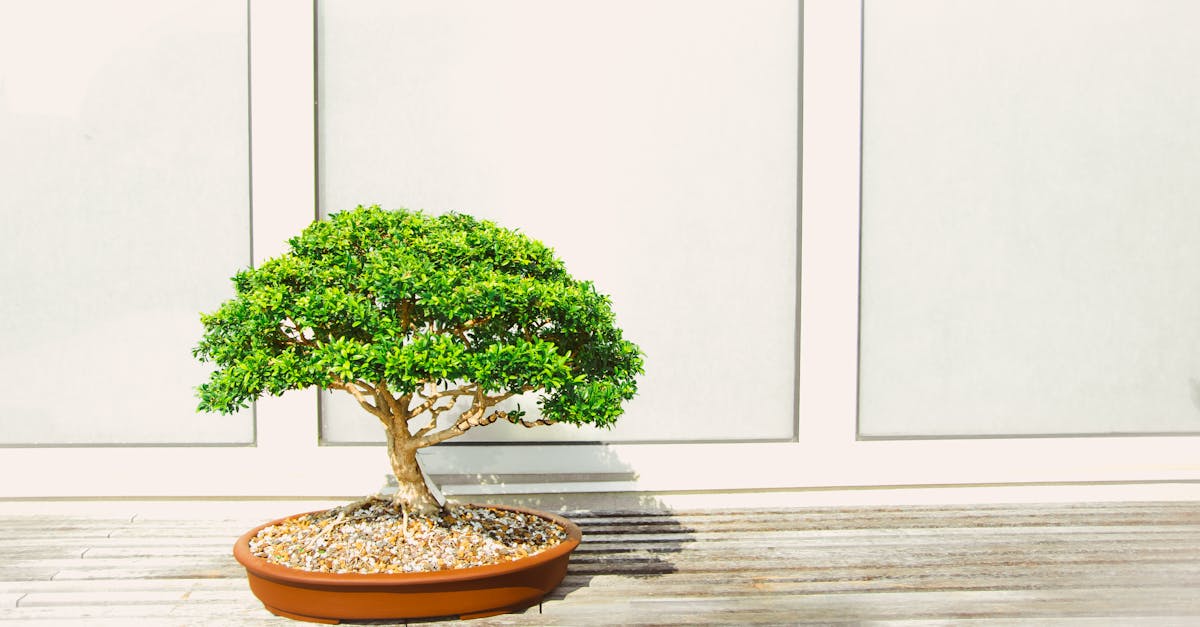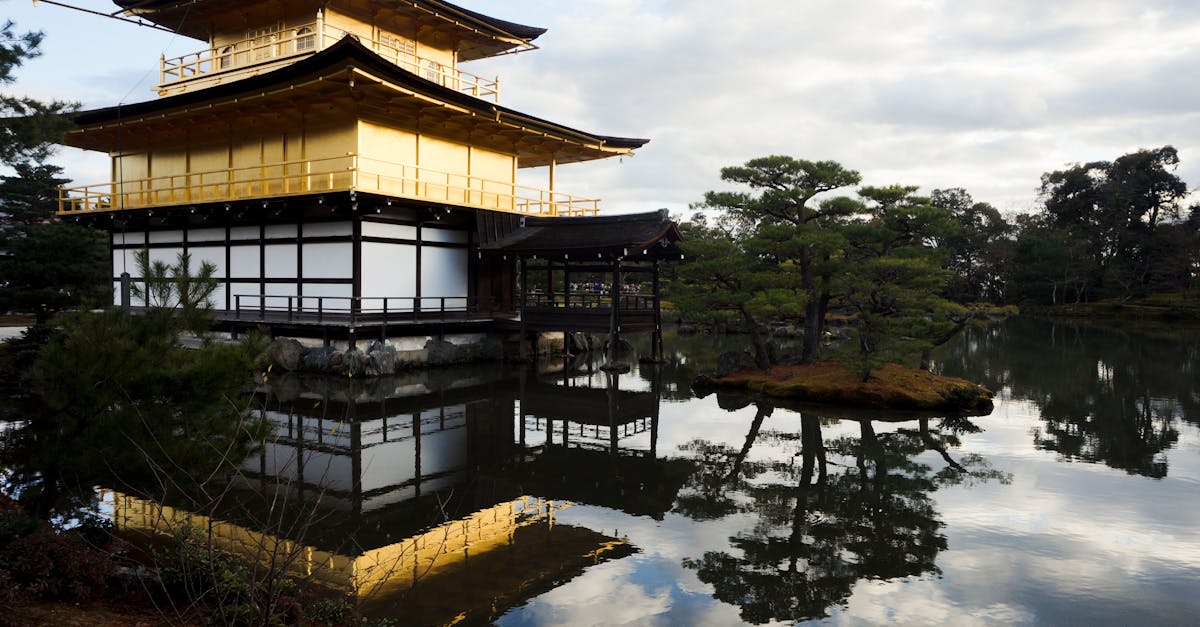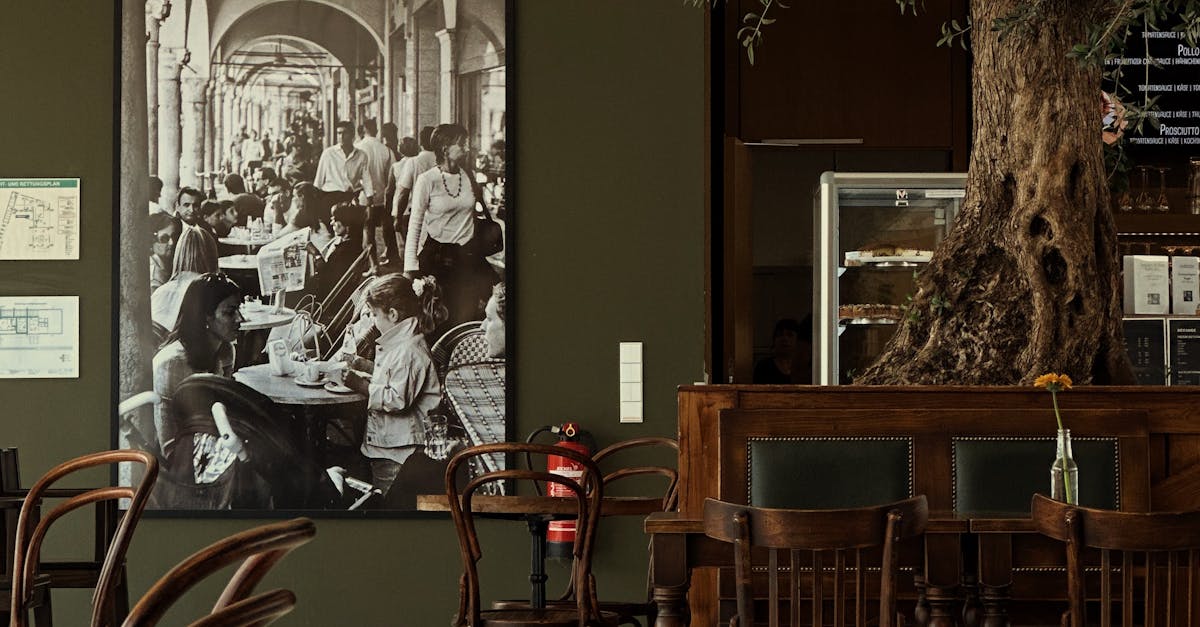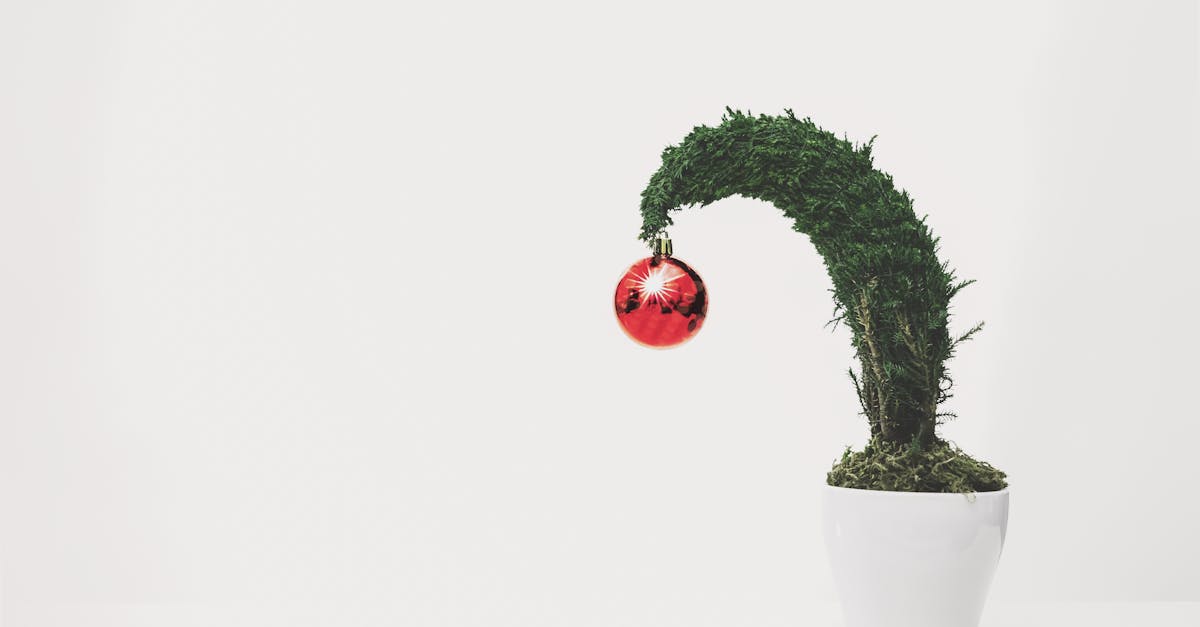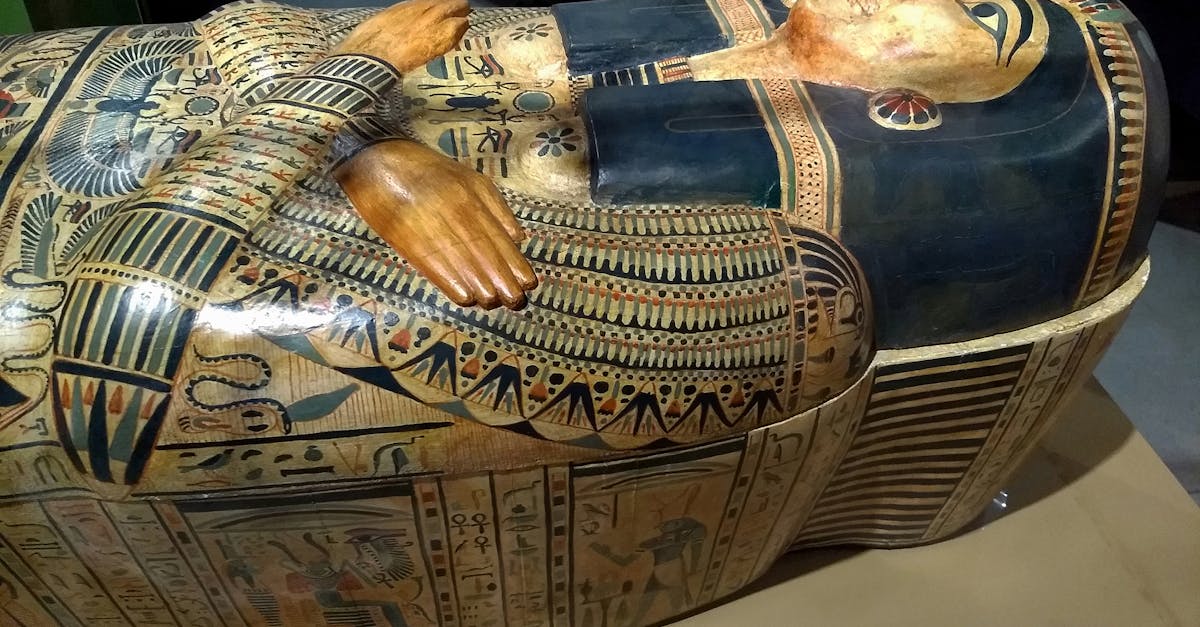Unlocking the Ancient Art of Miniaturization: A Beginner’s Guide to Bonsai
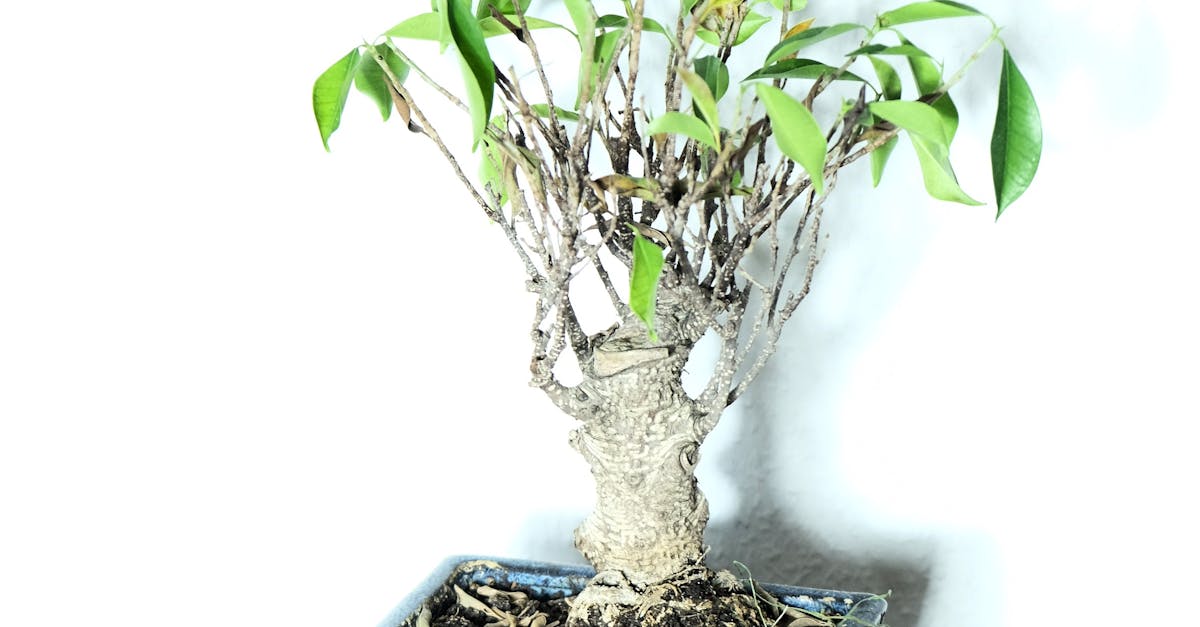
Everything You Need to Know About Getting Started with Bonsai
The art of bonsai is a beautiful and rewarding way to bring nature into your home. It’s a great way to relax and de-stress, and it can also teach you a lot about patience and perseverance.
If you’re thinking about getting started with bonsai, this article will give you everything you need to know. We’ll cover the basics of bonsai, including what it is, how to choose the right tree, and how to care for it. We’ll also provide a few tips on how to troubleshoot common problems.
Lets start with getting the basics straight: Bonsai is the Japanese art of growing miniature trees in containers. The word “bonsai” literally means “planted in a tray.” Bonsai trees are often pruned and shaped to create a desired look. Bonsai is a great way to bring nature indoors and can be a beautiful addition to any home.
1. Understanding Bonsai: An Introduction
Understanding Bonsai: An Introduction
Bonsai is the ancient Japanese art of cultivating miniature trees in containers. It is a unique and fascinating art form that has captured the hearts of enthusiasts for centuries.
The origins of bonsai can be traced back to the 13th century, when Chinese scholars began to grow dwarf trees in pots. This practice was later adopted by the Japanese, who developed it into an art form of its own.
Bonsai trees are typically grown in shallow pots, and they are carefully pruned and shaped to create a desired aesthetic effect. Bonsai trees can be of any species, but some of the most popular choices include pines, maples, and junipers.
There are many different styles of bonsai, and each style has its own unique set of rules and techniques. Some of the most common styles include:
- Formal upright: This is the most traditional style of bonsai. The tree is grown in a vertical position, with a straight trunk and evenly spaced branches.
- Informal upright: This style is similar to the formal upright style, but the tree is allowed to grow in a more natural shape.
- Slanting: This style features a tree that is grown at an angle. The trunk may be straight or curved, and the branches may be arranged in a variety of ways.
- Cascading: This style features a tree that is grown over the edge of the pot. The branches may hang down or cascade over the sides of the pot.
- Windswept: This style features a tree that has been shaped to look like it has been blown by the wind. The trunk may be bent or twisted, and the branches may be arranged in a variety of ways.
Bonsai is a beautiful and rewarding art form that can be enjoyed by people of all ages. If you are interested in learning more about bonsai, there are many resources available online and in libraries.
2. Choosing the Right Bonsai Tree for Beginners

Choosing the Right Bonsai Tree for Beginners
Choosing the right bonsai tree for beginners is an important decision. There are many different species of bonsai trees to choose from, and each species has its own unique set of characteristics. Some species are more difficult to care for than others, and some are more suitable for beginners than others.
When choosing a bonsai tree for beginners, it is important to consider the following factors:
- Hardiness: Bonsai trees should be able to tolerate the climate in which they are being grown. If you live in a cold climate, you will need to choose a species that is hardy enough to survive the winter.
- Growth rate: Bonsai trees grow slowly, but some species grow more slowly than others. If you are impatient, you may want to choose a species that grows more quickly.
- Aesthetic appeal: Bonsai trees are often chosen for their aesthetic appeal. When choosing a tree, it is important to choose a species that you find attractive.
Some of the most popular bonsai tree species for beginners include:
- Chinese elm: Chinese elms are a popular choice for beginners because they are hardy and easy to care for. They have small leaves and a dense branching structure, which makes them ideal for creating miniature landscapes.
- Japanese maple: Japanese maples are another popular choice for beginners. They are deciduous trees, which means that they lose their leaves in the fall. Japanese maples come in a variety of colors, including red, orange, and yellow.
- Ficus: Ficus trees are a good choice for beginners because they are very tolerant of neglect. They can tolerate a wide range of light conditions and watering schedules.
- Juniper: Junipers are a good choice for beginners because they are very hardy. They can tolerate a wide range of climates and soil conditions.
- Pine: Pines are a good choice for beginners because they are very slow growing. This makes them ideal for people who want to create a bonsai tree that will last for many years.
Once you have chosen a bonsai tree, it is important to learn how to care for it properly. Bonsai trees require special care and attention, and if you do not know how to care for them properly, they will not thrive.
Popular Beginner-Friendly Bonsai Species
Popular Beginner-Friendly Bonsai Species
There are many different species of bonsai trees that are suitable for beginners, but some of the most popular include:
- Chinese elm (Ulmus parvifolia): Chinese elms are deciduous trees with small, glossy leaves. They are very hardy and easy to care for, making them a good choice for beginners. Chinese elms can be grown in a variety of climates and soil conditions.
- Japanese maple (Acer palmatum): Japanese maples are deciduous trees with beautiful, deeply lobed leaves. They come in a variety of colors, including red, orange, and yellow. Japanese maples are a little more difficult to care for than Chinese elms, but they are still a good choice for beginners. Japanese maples prefer to grow in well-drained soil and partial shade.
- Ficus (Ficus spp.): Ficus trees are evergreen trees with large, leathery leaves. They are very tolerant of neglect and can tolerate a wide range of light conditions and watering schedules. Ficus trees are a good choice for beginners who are looking for a low-maintenance bonsai tree.
- Juniper (Juniperus spp.): Junipers are evergreen trees with small, needle-like leaves. They are very hardy and can tolerate a wide range of climates and soil conditions. Junipers are a good choice for beginners who are looking for a bonsai tree that is easy to care for.
- Pine (Pinus spp.): Pines are evergreen trees with long, needle-like leaves. They are very slow growing and can live for many years. Pines are a good choice for beginners who are looking for a bonsai tree that will last for a long time. Pines prefer to grow in well-drained soil and full sun.
When choosing a bonsai tree for beginners, it is important to consider the climate in which you live and the amount of time you are willing to spend caring for your tree. With a little care and attention, any of the bonsai species listed above can make a beautiful and rewarding addition to your home.
Where to Purchase a Bonsai Tree
Where to Purchase a Bonsai Tree
There are many different places where you can purchase a bonsai tree, including local nurseries, online retailers, and specialized bonsai growers.
Local nurseries are a great place to purchase a bonsai tree because you can see the trees in person before you buy them. This is important because it allows you to inspect the tree for any signs of disease or pests. You can also ask the nursery staff for advice on choosing the right tree for your needs.
Online retailers are another good option for purchasing a bonsai tree. There are many reputable online retailers that sell a wide variety of bonsai trees. When purchasing a bonsai tree online, it is important to read the reviews of the retailer before you buy. You should also make sure that the retailer offers a guarantee on their trees.
Specialized bonsai growers are the best source for high-quality bonsai trees. Bonsai growers typically have a deep understanding of the art of bonsai and can provide you with expert advice on choosing and caring for your tree. Bonsai growers typically sell their trees at a higher price than local nurseries or online retailers, but their trees are often of a higher quality.
No matter where you choose to purchase your bonsai tree, it is important to do your research and choose a reputable seller. With a little care and attention, your bonsai tree can be a beautiful and rewarding addition to your home.
3. Essential Components of a Bonsai Starter Kit
Essential Components of a Bonsai Starter Kit
A bonsai starter kit typically includes the following essential components:
- Bonsai pot: The bonsai pot is a shallow pot with drainage holes. It is used to plant the bonsai tree and provide it with support. Bonsai pots come in a variety of shapes and sizes, and the type of pot you choose will depend on the size and style of your tree.
- Bonsai soil: Bonsai soil is a specially formulated soil mix that is designed to provide the bonsai tree with the nutrients and drainage it needs. Bonsai soil is typically made from a combination of inorganic materials, such as akadama and pumice, and organic materials, such as compost and peat moss.
- Pruning tools: Pruning tools are used to shape and maintain the bonsai tree. Pruning tools typically include scissors, shears, and wire cutters. The type of pruning tools you need will depend on the size and style of your tree.
- Watering can: A watering can is used to water the bonsai tree. Watering cans come in a variety of shapes and sizes, and the type of watering can you choose will depend on the size of your tree and the frequency with which you water it.
- Fertilizer: Fertilizer is used to provide the bonsai tree with the nutrients it needs to grow and thrive. Fertilizer typically comes in liquid or granular form, and the type of fertilizer you choose will depend on the size and style of your tree.
In addition to the essential components listed above, a bonsai starter kit may also include other items, such as a humidity tray, a misting bottle, and a display stand. These items are not essential for growing a bonsai tree, but they can be helpful in providing your tree with the best possible care.
With the right tools and materials, you can successfully grow and care for a beautiful bonsai tree.
Bonsai Pot and Soil
Bonsai Pot and Soil
The bonsai pot and soil are two of the most important components of a bonsai tree. The pot provides support for the tree and helps to control its growth, while the soil provides the tree with nutrients and water.
Bonsai pots come in a variety of shapes and sizes, and the type of pot you choose will depend on the size and style of your tree. Bonsai pots are typically made from ceramic or plastic, and they should have drainage holes to allow excess water to escape.
Bonsai soil is a specially formulated soil mix that is designed to provide the bonsai tree with the nutrients and drainage it needs. Bonsai soil is typically made from a combination of inorganic materials, such as akadama and pumice, and organic materials, such as compost and peat moss.
The type of bonsai soil you choose will depend on the species of tree you are growing. Some trees, such as pines and junipers, prefer a well-draining soil, while other trees, such as maples and elms, prefer a soil that retains more moisture.
It is important to repot your bonsai tree every few years to ensure that it has fresh soil and to prevent the roots from becoming pot-bound. When repotting your tree, be sure to use a pot that is slightly larger than the previous pot and to use fresh bonsai soil.
With the right pot and soil, your bonsai tree will be able to thrive and grow for many years to come.
Pruning Tools
Pruning Tools
Pruning is an essential part of bonsai care. Pruning helps to shape and maintain the tree, and it also encourages new growth. There are a variety of pruning tools available, and the type of tool you use will depend on the size and type of tree you are pruning.
The most basic pruning tool is a pair of scissors. Scissors can be used to prune small branches and leaves. Shears are another type of pruning tool that can be used to prune larger branches. Shears come in a variety of sizes and shapes, and the type of shears you choose will depend on the size and type of tree you are pruning.
Wire cutters are another essential pruning tool. Wire cutters are used to cut wire that is used to train and shape bonsai trees. Wire cutters come in a variety of sizes and shapes, and the type of wire cutters you choose will depend on the size and type of wire you are cutting.
When pruning your bonsai tree, it is important to use the right tools for the job. Using the wrong tools can damage your tree. It is also important to prune your tree regularly to keep it healthy and looking its best.
Here are some tips for pruning your bonsai tree:
- Use sharp tools.
- Make clean cuts.
- Prune regularly.
- Remove dead or diseased branches.
- Shape the tree according to your desired style.
With the right tools and techniques, you can prune your bonsai tree to create a beautiful and healthy work of art.
Watering and Fertilizing Equipment
Watering and Fertilizing Equipment
Watering and fertilizing are two of the most important aspects of bonsai care. Watering helps to keep the tree hydrated, while fertilizing provides the tree with the nutrients it needs to grow and thrive.
There are a variety of watering and fertilizing tools available, and the type of tool you use will depend on the size and type of tree you are caring for. For small trees, a simple watering can or spray bottle may be sufficient. For larger trees, you may need to use a hose or watering system.
When watering your bonsai tree, it is important to water deeply and evenly. Avoid overwatering, as this can lead to root rot. It is also important to use water that is at room temperature.
Fertilizing your bonsai tree is also important, but it is important to fertilize sparingly. Overfertilizing can damage your tree. The type of fertilizer you use will depend on the species of tree you are growing. Some trees, such as pines and junipers, prefer a fertilizer that is low in nitrogen. Other trees, such as maples and elms, prefer a fertilizer that is higher in nitrogen.
There are a variety of fertilizing tools available, and the type of tool you use will depend on the type of fertilizer you are using. For liquid fertilizers, you can use a watering can or a spray bottle. For granular fertilizers, you can use a spoon or a trowel.
With the right watering and fertilizing equipment and techniques, you can keep your bonsai tree healthy and looking its best.
Additional Accessories
Additional Accessories
In addition to the essential components of a bonsai starter kit, there are a number of optional accessories that can enhance the bonsai experience. These accessories can help to create a more humid environment for your tree, display your tree in a more attractive way, and make it easier to care for your tree.
Misters are a great way to increase the humidity around your bonsai tree. This is especially important for trees that are native to humid climates, such as tropical trees. Misting your tree regularly will help to keep its leaves hydrated and prevent them from drying out.
Humidity trays are another way to increase the humidity around your bonsai tree. Humidity trays are shallow trays that are filled with water. The water in the tray evaporates and creates a humid environment around the tree. Humidity trays are a good option for trees that are native to humid climates, or for trees that are kept in a dry environment.
Display stands are a great way to display your bonsai tree in a more attractive way. Display stands come in a variety of shapes and sizes, and you can choose a stand that matches the style of your tree and your home décor. Display stands can also help to protect your tree from damage, such as from pets or children.
Other optional accessories that can enhance the bonsai experience include:
- Watering cans with long spouts for precise watering
- Fertilizer specifically formulated for bonsai trees
- Soil moisture meters to help you monitor the moisture level of your soil
- Pruning shears for shaping and maintaining your tree
- Wire for training and shaping your tree
With the right accessories, you can create a beautiful and thriving bonsai tree that will bring you years of enjoyment.
4. Basic Bonsai Care Techniques
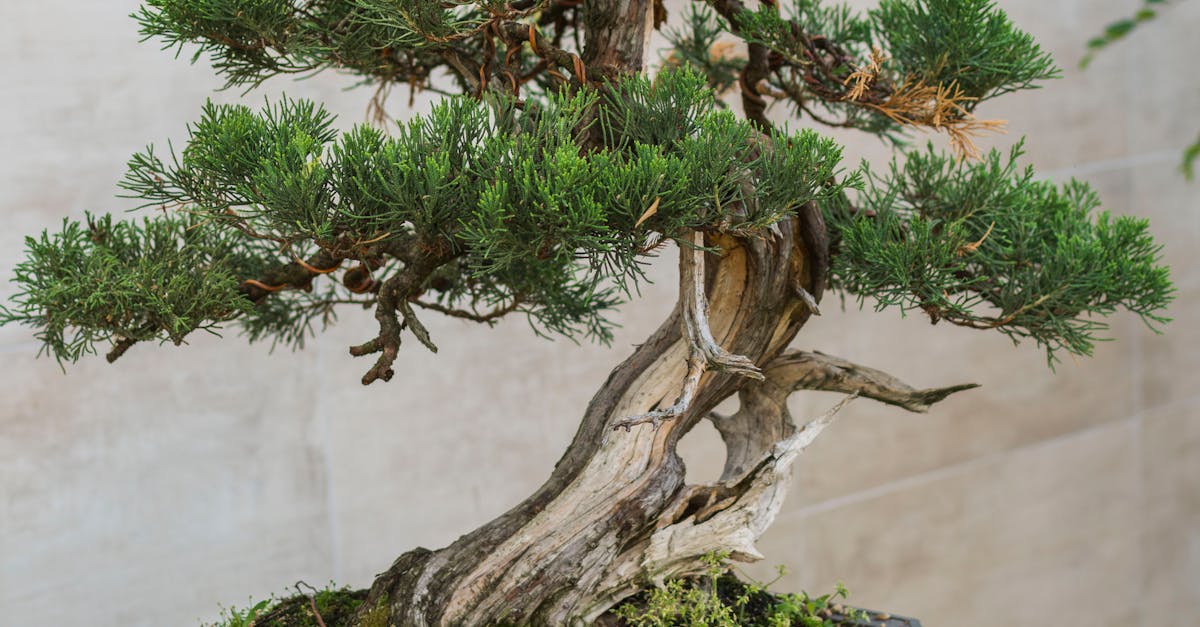
Basic Bonsai Care Techniques
Bonsai trees require special care and attention to thrive. Here are some basic bonsai care techniques that will help you to keep your tree healthy and looking its best:
- Watering: Bonsai trees need to be watered regularly, but it is important to avoid overwatering. Overwatering can lead to root rot, which can kill your tree. The best way to water your bonsai tree is to check the soil moisture level before watering. If the soil is dry to the touch, it is time to water your tree. Water your tree deeply and evenly, and then allow the excess water to drain out of the pot.
- Fertilizing: Bonsai trees need to be fertilized regularly to provide them with the nutrients they need to grow and thrive. The best way to fertilize your bonsai tree is to use a balanced fertilizer that is specifically formulated for bonsai trees. Fertilize your tree according to the instructions on the fertilizer package.
- Pruning: Pruning is an essential part of bonsai care. Pruning helps to shape and maintain the tree, and it also encourages new growth. There are a variety of pruning techniques that can be used on bonsai trees, and the type of pruning technique you use will depend on the species of tree you are growing. Consult with the article’s previous sections for more information on the different types of pruning shears and how to properly prune your bonsai tree.
- Repotting: Bonsai trees need to be repotted every few years to ensure that they have fresh soil and to prevent the roots from becoming pot-bound. Repotting is typically done in the spring or fall. When repotting your bonsai tree, be sure to use a pot that is slightly larger than the previous pot and to use fresh bonsai soil.
Watering Techniques
Watering Techniques
Watering is one of the most important aspects of bonsai care. Bonsai trees need to be watered regularly, but it is important to avoid overwatering. Overwatering can lead to root rot, which can kill your tree. The best way to water your bonsai tree is to check the soil moisture level before watering. If the soil is dry to the touch, it is time to water your tree.
The frequency with which you need to water your bonsai tree will depend on a number of factors, including the size of the pot, the type of soil, and the climate in which you live. Trees in small pots will need to be watered more frequently than trees in large pots. Trees in well-draining soil will need to be watered more frequently than trees in poorly-draining soil. Trees in hot, dry climates will need to be watered more frequently than trees in cool, humid climates.
There are a few different ways to water your bonsai tree. The most common method is to use a watering can with a long spout. This allows you to water the soil directly, without getting the leaves wet. You can also use a spray bottle to water your tree. This is a good method for trees that have small leaves or that are sensitive to water on their leaves.
No matter which watering method you use, it is important to water your tree deeply and evenly. Water the soil until it is evenly moist throughout. Avoid overwatering, as this can lead to root rot.
Fertilizing Schedule
Fertilizing Schedule
Fertilizing is an essential part of bonsai care. Bonsai trees need to be fertilized regularly to provide them with the nutrients they need to grow and thrive. The best way to fertilize your bonsai tree is to use a balanced fertilizer that is specifically formulated for bonsai trees. Fertilize your tree according to the instructions on the fertilizer package.
The frequency with which you need to fertilize your bonsai tree will depend on a number of factors, including the species of tree, the size of the pot, and the climate in which you live. Trees that are actively growing will need to be fertilized more frequently than trees that are dormant. Trees in small pots will need to be fertilized more frequently than trees in large pots. Trees in hot, dry climates will need to be fertilized more frequently than trees in cool, humid climates.
There are a few different ways to apply fertilizer to your bonsai tree. The most common method is to use a liquid fertilizer. Liquid fertilizers are easy to apply and they are quickly absorbed by the tree. You can also use a granular fertilizer. Granular fertilizers are slow-release fertilizers that provide nutrients to the tree over a period of time. No matter which type of fertilizer you use, it is important to follow the instructions on the fertilizer package.
Pruning Techniques
Pruning Techniques
Pruning is an essential part of bonsai care. Pruning helps to shape and maintain the tree, and it also encourages new growth. There are a variety of pruning techniques that can be used on bonsai trees, and the type of pruning technique you use will depend on the species of tree you are growing and the desired shape of the tree.
Root pruning is a technique that is used to control the size of the tree’s root system. Root pruning is typically done when the tree is repotted. To root prune, carefully remove the tree from its pot and use a sharp knife to trim the roots back by about one-third. Be sure to make clean cuts and to remove any dead or diseased roots.
Branch pruning is a technique that is used to shape the tree’s branches. Branch pruning can be done at any time of year, but it is best to prune in the spring or fall when the tree is not actively growing. To branch prune, use a sharp knife or pruning shears to remove any branches that are crossing, rubbing, or growing in an undesirable direction. You can also use branch pruning to shorten branches and to create new buds.
Leaf trimming is a technique that is used to control the size of the tree’s leaves. Leaf trimming can be done at any time of year, but it is best to trim in the spring or fall when the tree is not actively growing. To leaf trim, use a sharp knife or scissors to trim the leaves back to the desired size. Leaf trimming can help to create a more compact tree and to improve the tree’s overall appearance.
Repotting
Repotting
Repotting is an important part of bonsai care. Repotting helps to refresh the soil, promote root growth, and prevent the tree from becoming pot-bound. Bonsai trees should be repotted every 2-3 years, or more frequently if the tree is growing rapidly. Early spring or fall is the best time to repot your bonsai tree as it allows the tree time to recover before the hot summer months or cold winter months set in.
To repot your bonsai tree, carefully remove it from its pot. Use a sharp knife to cut away any dead or diseased roots. Then, gently loosen the remaining roots and remove any old soil. Choose a new pot that is slightly larger than the previous pot and fill it with fresh bonsai soil. Place the tree in the new pot and backfill with soil, tamping down gently to remove any air pockets. Water the tree thoroughly after repotting.
When choosing a soil for your bonsai tree, it is important to select a soil that is well-draining and has a good structure. Bonsai soil is typically made from a combination of inorganic materials, such as akadama and pumice, and organic materials, such as compost and peat moss. The type of soil you choose will depend on the species of tree you are growing.
5. Troubleshooting Common Bonsai Problems
Troubleshooting Common Bonsai Problems
Bonsai trees are relatively low-maintenance plants, but they can still be susceptible to a number of problems, including pests, diseases, and growth issues. Here are some of the most common bonsai problems and how to fix them:
- Pests: Aphids, mealybugs, and spider mites are the most common pests that affect bonsai trees. These pests can be controlled with a variety of insecticidal soaps and sprays. Be sure to follow the instructions on the pesticide label carefully.
- Diseases: Fungal diseases, such as powdery mildew and root rot, can also affect bonsai trees. Fungal diseases can be treated with a variety of fungicidal sprays. Again, be sure to follow the instructions on the fungicide label carefully.
- Growth issues: Bonsai trees can also suffer from a variety of growth issues, such as yellowing leaves, stunted growth, and root rot. Yellowing leaves can be caused by a number of factors, including overwatering, underwatering, or nutrient deficiency. Stunted growth can be caused by a number of factors, including poor soil conditions, lack of sunlight, or root rot. Root rot can be caused by overwatering or by planting the tree in a pot that is too small.
If you are having problems with your bonsai tree, it is important to identify the problem and take steps to correct it. With proper care, your bonsai tree can thrive for many years to come.
Common Pests and Diseases
Common Pests and Diseases
Bonsai trees are susceptible to a variety of pests and diseases, just like other plants. However, because bonsai trees are often grown in small pots with limited soil volume, they can be more vulnerable to these problems. It is important to be able to recognize the symptoms of common pests and diseases so that you can take steps to control them quickly and effectively.
Pests
The most common pests that affect bonsai trees include aphids, mealybugs, and spider mites. Aphids are small, soft-bodied insects that feed on the sap of plants. Mealybugs are small, white insects that produce a cottony wax covering. Spider mites are tiny, spider-like creatures that feed on the leaves of plants.
Diseases
The most common diseases that affect bonsai trees include powdery mildew, root rot, and leaf spot. Powdery mildew is a fungal disease that causes a white powdery growth on the leaves of plants. Root rot is a fungal disease that attacks the roots of plants, causing them to rot and die. Leaf spot is a fungal disease that causes brown or black spots on the leaves of plants.
Control measures
There are a variety of control measures that can be used to prevent and treat pests and diseases on bonsai trees. These measures include:
- Prevention: The best way to prevent pests and diseases is to keep your bonsai tree healthy and vigorous. This means providing it with the right amount of water, sunlight, and nutrients. You should also inspect your tree regularly for signs of pests or diseases and take steps to control them as soon as possible.
- Cultural practices: There are a number of cultural practices that can help to control pests and diseases on bonsai trees. These practices include:
- Watering: Watering your bonsai tree correctly is essential for its health. Overwatering can lead to root rot, while underwatering can stress the tree and make it more susceptible to pests and diseases.
- Fertilizing: Fertilizing your bonsai tree regularly will help to keep it healthy and vigorous. However, overfertilizing can damage the tree and make it more susceptible to pests and diseases.
- Pruning: Pruning your bonsai tree regularly will help to keep it healthy and vigorous. Pruning can also help to remove diseased or infested leaves and branches.
- Chemical control: Chemical controls, such as insecticides and fungicides, can be used to control pests and diseases on bonsai trees. However, chemical controls should only be used as a last resort, as they can be harmful to the tree and the environment.
Growth Issues
Growth Issues
Bonsai trees can experience a variety of growth issues, including yellowing leaves, stunted growth, and root rot. These problems can be caused by a number of factors, including improper watering, fertilizing, or pruning; pests or diseases; or environmental conditions.
Yellowing leaves
Yellowing leaves can be a sign of a number of problems, including overwatering, underwatering, nutrient deficiency, or pests or diseases. To diagnose the cause of yellowing leaves, it is important to inspect the tree carefully and consider the growing conditions.
- Overwatering: Overwatering can cause the roots of the tree to rot, which will lead to yellowing leaves. To correct overwatering, allow the soil to dry out completely before watering again. You may also need to repot the tree in fresh soil.
- Underwatering: Underwatering can also cause the leaves of the tree to turn yellow. To correct underwatering, water the tree deeply and regularly. You may also need to increase the humidity around the tree.
- Nutrient deficiency: Nutrient deficiency can also cause the leaves of the tree to turn yellow. To correct nutrient deficiency, fertilize the tree regularly with a balanced fertilizer.
- Pests or diseases: Pests or diseases can also cause the leaves of the tree to turn yellow. To control pests or diseases, follow the instructions in the section on “Common Pests and Diseases”.
Stunted growth
Stunted growth can be caused by a number of factors, including poor soil conditions, lack of sunlight, or root rot. To diagnose the cause of stunted growth, it is important to inspect the tree carefully and consider the growing conditions.
- Poor soil conditions: Poor soil conditions can prevent the roots of the tree from absorbing nutrients and water, which will lead to stunted growth. To correct poor soil conditions, repot the tree in fresh bonsai soil.
- Lack of sunlight: Bonsai trees need plenty of sunlight to grow properly. If the tree is not getting enough sunlight, it will experience stunted growth. To correct lack of sunlight, move the tree to a brighter location.
- Root rot: Root rot can also cause stunted growth. To control root rot, follow the instructions in the section on “Common Pests and Diseases”.
Root rot
Root rot is a fungal disease that attacks the roots of the tree, causing them to rot and die. Root rot can be caused by overwatering, poor drainage, or planting the tree in a pot that is too small. To control root rot, follow the instructions in the section on “Common Pests and Diseases”.
What is the best way to water my bonsai tree?
The best way to water your bonsai tree is to check the soil moisture level before watering. If the soil is dry to the touch, it is time to water your tree. Water your tree deeply and evenly, and then allow the excess water to drain out of the pot.
How often should I fertilize my bonsai tree?
The frequency with which you need to fertilize your bonsai tree will depend on a number of factors, including the species of tree, the size of the pot, and the climate in which you live. Trees that are actively growing will need to be fertilized more frequently than trees that are dormant. Trees in small pots will need to be fertilized more frequently than trees in large pots. Trees in hot, dry climates will need to be fertilized more frequently than trees in cool, humid climates.
How can I control pests and diseases on my bonsai tree?
The best way to control pests and diseases on your bonsai tree is to keep it healthy and vigorous. This means providing it with the right amount of water, sunlight, and nutrients. You should also inspect your tree regularly for signs of pests or diseases and take steps to control them as soon as possible.
What should I do if my bonsai tree has yellowing leaves?
Yellowing leaves can be a sign of a number of problems, including overwatering, underwatering, nutrient deficiency, or pests or diseases. To diagnose the cause of yellowing leaves, it is important to inspect the tree carefully and consider the growing conditions.
What should I do if my bonsai tree has stunted growth?
Stunted growth can be caused by a number of factors, including poor soil conditions, lack of sunlight, or root rot. To diagnose the cause of stunted growth, it is important to inspect the tree carefully and consider the growing conditions.

